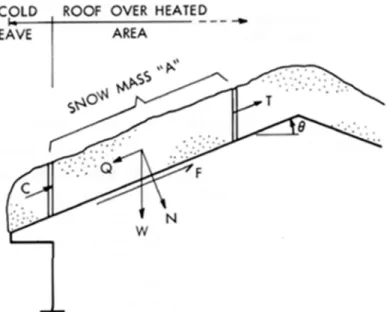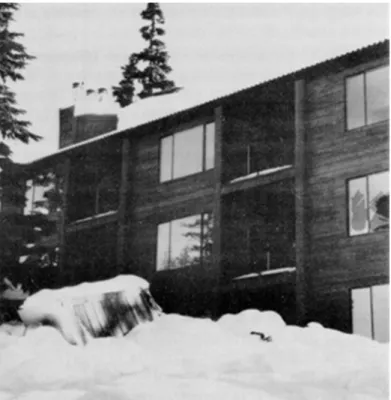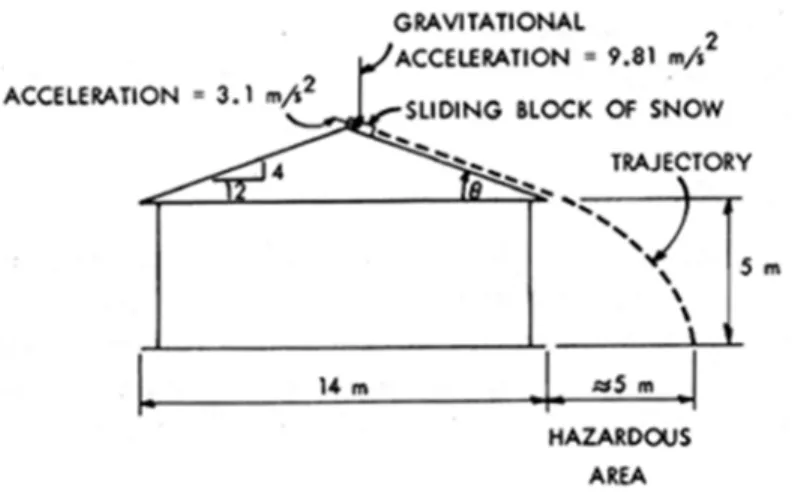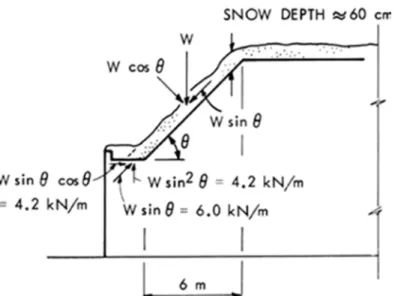Publisher’s version / Version de l'éditeur:
Vous avez des questions? Nous pouvons vous aider. Pour communiquer directement avec un auteur, consultez la première page de la revue dans laquelle son article a été publié afin de trouver ses coordonnées. Si vous n’arrivez pas à les repérer, communiquez avec nous à PublicationsArchive-ArchivesPublications@nrc-cnrc.gc.ca.
Questions? Contact the NRC Publications Archive team at
PublicationsArchive-ArchivesPublications@nrc-cnrc.gc.ca. If you wish to email the authors directly, please see the first page of the publication for their contact information.
https://publications-cnrc.canada.ca/fra/droits
L’accès à ce site Web et l’utilisation de son contenu sont assujettis aux conditions présentées dans le site
LISEZ CES CONDITIONS ATTENTIVEMENT AVANT D’UTILISER CE SITE WEB.
Canadian Building Digest, 1983-11-01
READ THESE TERMS AND CONDITIONS CAREFULLY BEFORE USING THIS WEBSITE.
https://nrc-publications.canada.ca/eng/copyright
NRC Publications Archive Record / Notice des Archives des publications du CNRC :
https://nrc-publications.canada.ca/eng/view/object/?id=0178340d-cb9e-4e07-8e04-94551cc337d6
https://publications-cnrc.canada.ca/fra/voir/objet/?id=0178340d-cb9e-4e07-8e04-94551cc337d6
NRC Publications Archive
Archives des publications du CNRC
For the publisher’s version, please access the DOI link below./ Pour consulter la version de l’éditeur, utilisez le lien DOI ci-dessous.
https://doi.org/10.4224/40000674
Access and use of this website and the material on it are subject to the Terms and Conditions set forth at
Sliding snow on sloping roofs
Canadian Building Digest
Division of Building Research, National Research Council Canada
CBD-228
Sliding Snow on Sloping Roofs
Please note
This publication is a part of a discontinued series and is archived here as an historical reference. Readers should consult design and regulatory experts for guidance on the applicability of the information to current construction practice.
Originally published November 1983. D.A. Taylor
Introduction
Sloping roofs on buildings are common. In the last few years, large inclined glass and metal roofs have become popular on major buildings in an urban setting. Designing for snow on all such sloping roofs, even on inclines as low as 10°, calls for a double measure of caution; they must be able to carry substantial snow loads1-3 but the possibility also exists of the snow suddenly breaking loose and sliding off, and endangering people, vehicles, other roofs, and mechanical and electrical installations below.
The Mechanics of Sliding
Figure 1 shows the forces involved when snow is deposited on a sloping roof. The mass of snow, A, tends to slide down the slope, . It is driven by the component Q of its own weight, W, resolved parallel to the roof surface (Q Wsin ). However, it is restrained by friction and
cohesion at the sliding surface. The cohesion and friction forces vary widely, even from day to day, depending on the climate, weather, heat loss from the building and roughness of the roof surface. In addition, the snow mass A is restrained by the tensile and compressive forces T and C. T comes from the snow frozen to the roof or anchored over the ridge and C, from the snow below, frozen to the cold eave.
Figure 1. Forces on the snow mass "A" on a slopping roof (C - compression force; T - tension force; W - weight; N - normal force; Q - sliding force + Wsin ; F - friction force)
Normally, snow slides when heat loss through the roof causes the 0°C temperature line to move up into the insulating snow layer and melt snow, lubricating the roof surface and destroying the cohesion and friction forces. There are other situations in which sliding occurs. Solar radiation passing through a thin snow cover can cause melting at the roof surface and sliding; snow may also slide if it accumulates above a weak layer of hoar frost (as in the
mountains of western Canada) or if it covers an ice layer lubricated by percolating rainfall. After this occurs, the normal progression is for a crack to penetrate the snow cover above (usually near the ridge), reducing the tensile force to zero. Then the compressive resistance at the eave is overwhelmed by the unrestrained snow mass above, and sliding occurs.
An uninsulated roof surface will have a temperature close to that of the air with which it is in contact. At low air temperatures, however, only a shallow depth of snow need build up to give the insulation required to allow melting at the roof surface. For example, for a double-glazed, glass roof with an air space of 12 mm (RSI 0.3 or R 1.69)4, less than 2 cm of snow is needed to give a temperature of 0°C at the roof/snow interface when the temperature is 20°C inside and -5°C outside. For a metal-covered roof insulated on the underside with RSI 1.76 (R 10)
insulation, about 10 cm of snow would be needed. If the outside temperature dropped to -10°C, the corresponding snow depth over glass would be about 10 cm and over metal about 20 cm. In all these instances, greater depths of insulating snow cover would cause significant melting at the roof surface5and the production of a layer of slush thick enough to allow the snow to slide over any shallow obstructions such as the 10 to 15 mm high horizontal members framing panes of glass. For these calculations the assumed insulating value used for the snow was RSI 4.58/m (R 0.66/in.)6.
Obstructions to Sliding
Although sliding may occur readily on simple roofs, it may be prevented or delayed by vents, chimneys, dormers, gutters, snow fences, parapets, and valleys (including valleys in L-shaped roofs). Under certain conditions of heavy snowfall with temperatures near or above 0°C, and with rainfall, or high heat loss from below, sliding has been known to damage or shear chimneys or other projections at the roof surface (Figure 2). Projections should either be located at the top of the slope or extended to the top to prevent accumulation behind them. There should also be enough space below the eaves to allow all the snow to slip off or it may fill in or bridge between eave and ground, preventing further sliding.
Figure 2. Chimney sheared off a sloping metal roof by heavy snow is lying is the foreground. Notice snow retained behind remaining chimney -- Mt. Washington, B.C. (photo -- D.
Cronmiller, Comox, B.C.)
The Hazardous Area below Sloping Roofs
Parking and pedestrian access below sloping roofs should be avoided, perhaps by fencing off the hazardous area. If the snow slides, it may land a considerable distance out from the eaves, a distance that can be only roughly estimated by calculating the trajectory of the falling snow mass (Figure 3). For example, a mass of snow starting at the ridge of the structure shown in Figure 3 and sliding under zero friction would land on the ground about 5 m from the eave. Since there will be some friction between the sliding snow and the roof, which depends on the roughness of the roof, the temperature, and perhaps rain, this is an upper bound. Due to friction, the acceleration decreases from g(sin ) to g(sin - µcos ) where is the slope, µ the coefficient of sliding friction, and g the acceleration due to gravity. If the roof is painted steel or aluminum (µ = src="/obj/irc/images/cbd/approx.gif" border=0 > 0.05), the trajectory will change only slightly, and if it is glass (µ = 0.02), even less so7. Therefore it is prudent to assume zero friction unless the surface is very rough.
Figure 3. Potentially hazardous area below slippery roof (coefficient of friction = src="/obj/irc/images/cbd/approx.gif" border=0 > 0)
Lateral Forces on Snow Fences and Other Obstructions
One way of preventing snow from sliding is to install snow fences on the roofs. These fences should be designed to take the shearing forces, assuming zero friction between the snow and the roof surface, especially on metal or glass roofs. The forces imposed on obstructions by snow trying to slide are very substantial indeed. For example, the force on a snow fence at the lower edge of a 6 m long roof sloping at 18° (4 in 12), and covered uniformly with 60 cm of snow could be as high as 2.7 kN per metre length of fence (185 lb/ft), assuming a snow density of 2.35 kN/m³ or 15 lb/ft³ (Figure 4).
Figure 4. Forces on a snow fence as the eave of an 18° metal roof (snow density = 2.35 kN/m³ A second example,that of a 6 m long 45° metal roof ending at a flat roof and a parapet (Figure 5) shows that substantial reaction forces on the flat roof have to be dealt with: a large vertical load carried by the roof deck and a large horizontal load carried by friction and, if the frictional resistance is inadequate, by the parapet.
Figure 5. Forces applied to a flat roof by snow on a 45° metal roof (snow density = 2.35 kN/m³ When a snow fence is added to prevent sliding, the load capacity of the roof as well as the fence should be checked. The reduction in design load on a slope allowed in most building codes may be due in part to snow removal by sliding and in part to other effects such as good drainage, the natural angle of repose of the snow, and the momentum of the falling snow crystals preventing their coming to rest on the slope. If a reduction is allowed because the roof is smooth, or warm and smooth, then this reduction should not be used when checking the capacity of a roof with a snow fence. The Commentary on Snow Loads in the 1980 National Building Code (NBC)8allows no reduction due to smoothness and heat loss and hence could be used in the design check. Since provisions in the NBC were derived mostly from observations on (asphalt) shingled roofs, or at least with these in mind, the use of a more conservative slope reduction equation than that in the NBC might be wise where devices to retain snow are
employed.
In addition, to avoid increasing the catch of snow, the height of a fence should be less than the depth corresponding to the design snow load. How much less is a good question. In the
mountains of western Canada where conditions are such that hoar frost grows readily, the top 30 cm of snow covering a weak layer of hoar frost above the top of the fence may "avalanche" off, much as it does on mountain slopes, but in most other areas the fence could probably be about 30 cm less than the design depth. There should also be adequate space under the snow fence (25 to 50 mm) to allow drainage of meltwater and winter rain.
Problems Due to Ice and Meltwater from Retained Snow
Heat loss from below and late winter sun will slowly melt the snow retained on a slope, and dangerous icicles as well as ice dams may form9. Where a roof slopes towards a sidewalk or entrance to a building, the constant dripping could lead to undesirable ice build-up on the walk and hazardous conditions for pedestrians.
Conclusion
To deal safely with snow loads, the designer of sloping roofs should address two problems: 1) the roof must withstand the expected load, and 2) either measures should be taken to prevent the snow from sliding off and endangering people or property below, or such vulnerable areas should be kept clear and be clearly marked as being hazardous for the duration of the snowy season.
1. Taylor, D.A., A Survey of Snowloads on the Roofs of Arena-Type Buildings in Canada. Canadian Journal of Civil Engineering, 1979, Vol. 6, No.1, pp. 85-96.
2. Taylor, D.A., Roof Snow Loads in Canada. Canadian Journal of Civil Engineering, 1980, Vol. 7, No. 1, pp. 1-18.
3. Taylor, D.A., Snow Loads for the Design of Cylindrical Curved Roofs in Canada: 1953-1980. Canadian Journal of Civil Engineering, 1981, Vol. 8, No. 1, pp. 63-76.
4. Fundamentals Volume, Design Heat Transmission Coefficients. American Society of Heating, Refrigeration and Air Conditioning Engineers Handbook, 1981, Chapter 23, Atlanta, GA 30329. 5. Turenne, R.G., The Effect of Increased Insulation on Exposed Bituminous Roofing Membranes.
Building Practice Note No. 4, Division of Building Research, National Research Council of Canada, Ottawa, Ontario, 1977, 5 p.
6. Williams, G.P. and Gold, L.W., Snow Density and Climate. Transactions Eng. Institute of Canada, 1958, Vol. 2, No. 2, pp. 91-94.
7. Gray, D.M. and Male, D.H., eds., Handbook of Snow: Principles, Processes, Management and Use. Pergamon Press Canada Ltd., Willowdale, Ontario, 1981, 776 p.
8. National Building Code, Commentary H, Snow Loads, supplement to the National Building Code of Canada, 1980. National Research Council of Canada, Ottawa, Ontario, NRCC 17724, pp. 198-205.
9. Baker, M.C., Ice on Roofs.Canadian Building Digest 89, Division of Building Research, National Research Council of Canada, Ottawa, 1967, 4 p.



